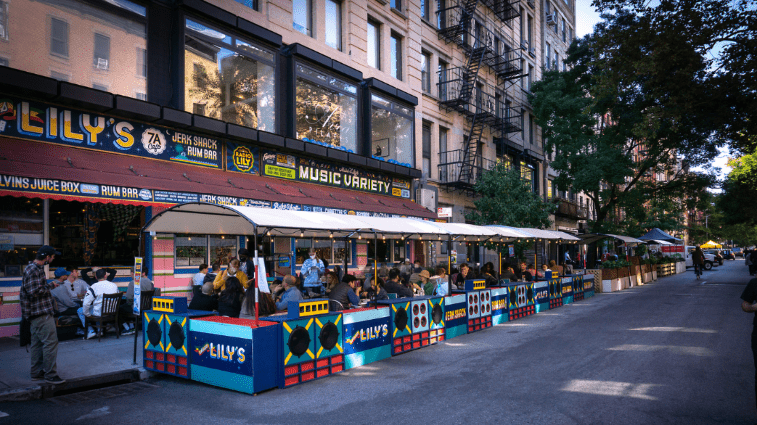
Dancing in the Street: What a Permanent Open Streets Program Might Mean for NYC Construction
In May 2021, the Open Streets program, which converted 83 miles of NYC roadways into pedestrian walkways to better accommodate pandemic outdoor dining, was made permanent for neighborhoods that chose to keep it.
The effects of this decision are only just starting to be felt – earlier this month, it was announced that, after being an Open Streets participant throughout the pandemic, the Meatpacking District would completely ban cars for good.
While Open Streets allows for temporary street closures to accommodate dining and activities, the Meatpacking District will be banning cars 24/7, much like Stone Street in FiDi, but covering a larger area.
Will the Meatpacking District be the only one that makes this dramatic move, or just the first of many? More than 30% of land in NYC is dedicated to roads, but 85% of New Yorkers don’t even own cars. In a city that has long catered to cars, what would a shift to a pedestrian-first model, signified by permanent Open Streets areas, mean for buildings and construction?
Here are a few predictions.
Opportunities in Barrier Design
Since Open Streets went up quickly as a temporary measure, participating areas have blocked off traffic with moveable metal barricades and wooden police line barricades, set up by neighborhood volunteers. Unfortunately, this has occasionally led to unwitting or angry drivers illegally moving, breaking, or even stealing the barriers, putting the safety of pedestrians at risk.
If Open Streets are to become a permanent fixture, a more permanent fix is needed.
Taking a page from the barriers used for Open Restaurants roadway seating, barriers for a permanent Open Streets area would need to be more solid and preferably designed to fit the vibe of the neighborhood, but still moveable in case emergency vehicles need access to the area.
The Meatpacking Business Improvement District, for example, has stated it will use hexagon-shaped planter barricades to keep out traffic between Ninth Avenue and Washington Street. Bloomberg City Lab also suggested retractable bollards as an option.
Other permanent Open Streets participants will need similar solutions to keep the party going.
Less Need for Parking
There are 1,100 parking garages and 100,000 parking lots in Manhattan alone. Within areas planning to block off traffic, many of these could become obsolete. Without having to worry about parking. this could help cut 15-20% of new construction costs for high rises, according to Construction Executive.
For now, though, new buildings that currently need parking might want to consider potential adaptability before finalizing their plans. While an outdoor parking lot can easily be repurposed, an indoor parking garage might take some tweaking.
Nonetheless, it can be done, provided the ceilings are high enough. Construction Executive recommends 15–18-foot floor-to-ceiling clearances with flatter surfaces for better chance of future conversions.
More Mixed-Use Buildings
With an increase in foot traffic to local businesses in car-free areas, more building owners may be encouraged to get in on the action.
Covid-19 has already noticeably accelerated discussions of mixed-use repurposing trends due to the exodus of workers from office buildings and decline of some hotels, malls, and department stores. But permanent Open Streets may open that appeal to residential buildings as well.
If zoning allows, residential buildings wanting to boost their appeal and outreach to the community may add some commercial space, like a shop or café, on the first floor. This could also increase flexibility for the space as neighborhood demographics and needs change.
It’s still early to tell, but it’s clear that the growth of Open Streets is one of many ways Covid-19 will continue to impact the shape of New York City. Your present and future projects may depend on keeping an eye on these developments.
If you need assistance navigating your next new building or alteration project, please reach out to Outsource Consultants.
If you need assistance navigating your next new building or alteration project, please reach out to Outsource Consultants.
Resources
- Open Streets Program
- Construction Executive – “Driverless Cars’ Impact on Construction”
- Decoder – “Waste Not, Want Not: Adaptive Reuse of Closed Commercial Properties”








